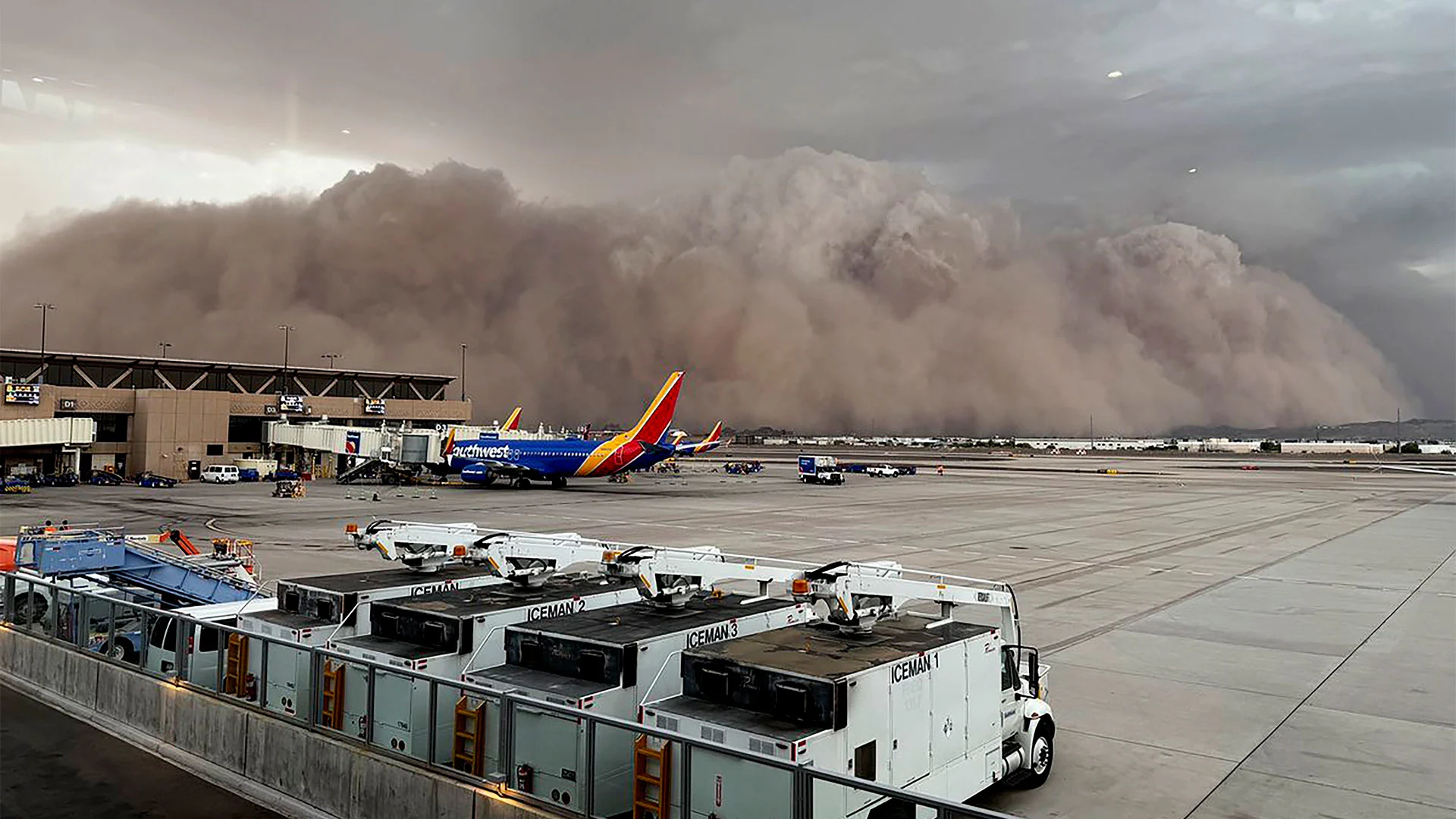
"Thunderstorms can produce strong downdrafts that hit the ground at 50 to 80 mph (80 to 129 kph) and then spread in all directions, said Sean Benedict, a meteorologist at the National Weather Service's Phoenix office.The winds stir up loose dust and dirt, including from arid areas and farm fields, that get blown along in front of the approaching storm cell.If thunderstorms don't keep developing, the dust dissipates."
"Scientists say localized bursts of rain in the U.S. Southwest during the monsoon season in summer have become more intense since the 1970s as the atmosphere heats up due to human-caused climate change.At the same time, it's raining less often as droughts last longer and some arid areas expand. Climate change increases the odds of both severe drought and heavier storms that could set the stage for more intense dust storms in the future."
Thunderstorms produce strong downdrafts that can hit the ground at 50 to 80 mph and spread outward, lifting loose dust and dirt into massive walls. These haboobs can reach thousands of feet in height, stretch several miles across, and travel at speeds up to 60 mph, sometimes moving as far as 100 miles. Rain-cooled air ahead of storms can sustain updrafts that generate new storms and additional downdrafts, allowing haboobs to grow. Haboob occurrence depends on local dust availability and land use, with prominent dust corridors such as between Phoenix and Tucson. Climate change may intensify storms and droughts, but effects on haboob frequency remain uncertain.
Read at Fast Company
Unable to calculate read time
Collection
[
|
...
]